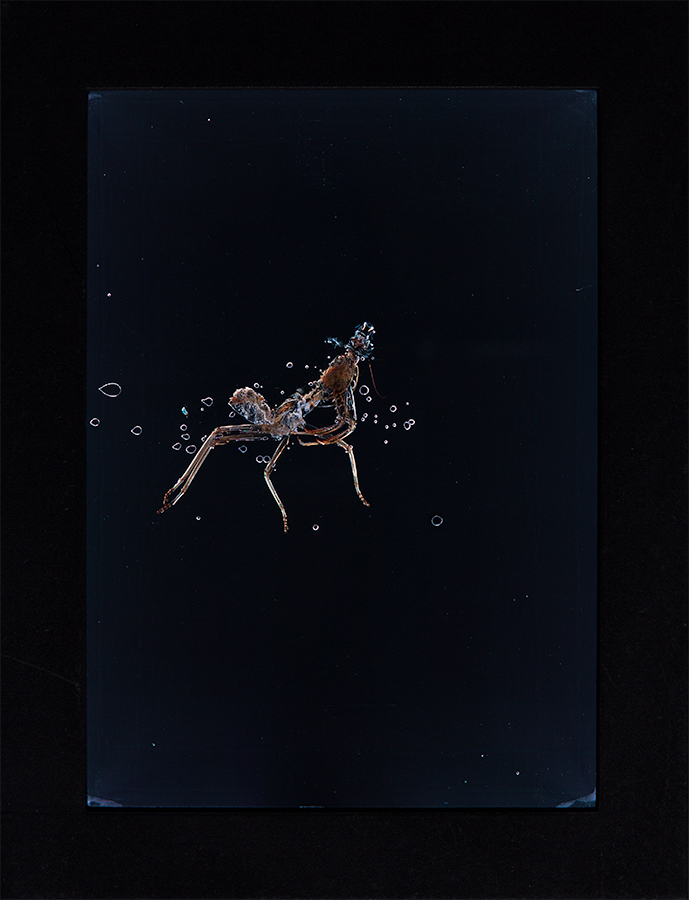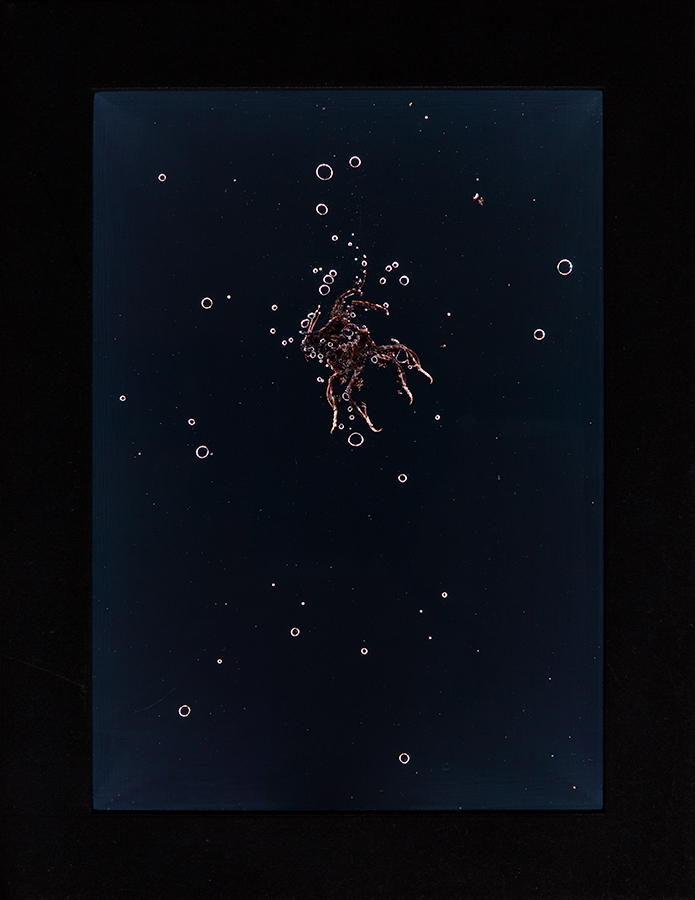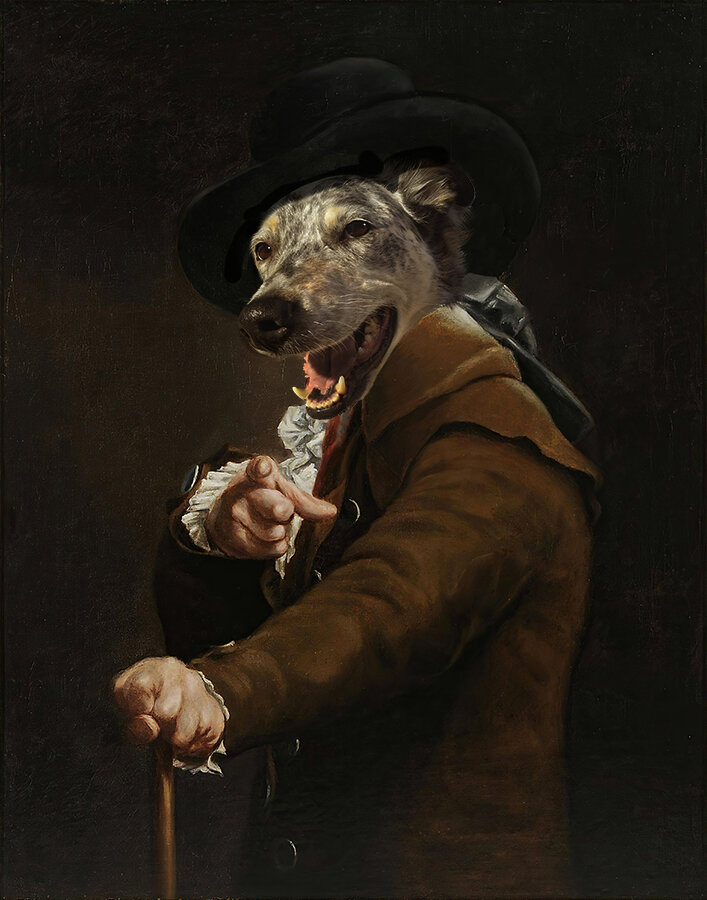Finally have finished version of the frame and skin for an eventual mantis show. The process has been surprisingly difficult and times quite cost prohibitive. The hardest part was finding someone willing to wet mount two sheets of plexi together but Michael at Paragon Frames in San Francisco eventually agreed to do it after six or so no's from other places.
So it's mounted between two sheets, 1/4 and 1/2 in sheets if I recall correctly. I had him experimented with using Optium from tru-view but it wouldn't glue doesn't polish well at all. It's a shame, Optium is an amazing glazing medium. The top layer should be a UV grade plexi so the piece should be protected from fading as a result of ambient (it yet to be seen what long time usage of the LEDs will do). The first two skins I also had mounted a layer of black plexi but due to corner issues I ended up painting this one instead of adding the third layer of plexi and then modifying the frame design to better hold the mounted skin place by putting in a slight recession into the back plate.
The next obstacle was the frame. Some how that was done is covered here in an instructable I wrote for submitting the Autodesk AIR http://www.instructables.com/id/Lightup-Frame/. The main difference now is printing the back plate with the recession to hold the mounted skin and extending down the inner lip some to compensate. I also chromed the inside of the frame but it didn't really add much to the light output. The finish was achieved by several hours of sanding and then careful misting with acetone. I ended up doing the finish twice because the first version of the patina was far too bright.
The next difficulty will be designing a more discrete or visually meaningful control box. More on that later.
The skin is from this girl. It was her last shed.



























